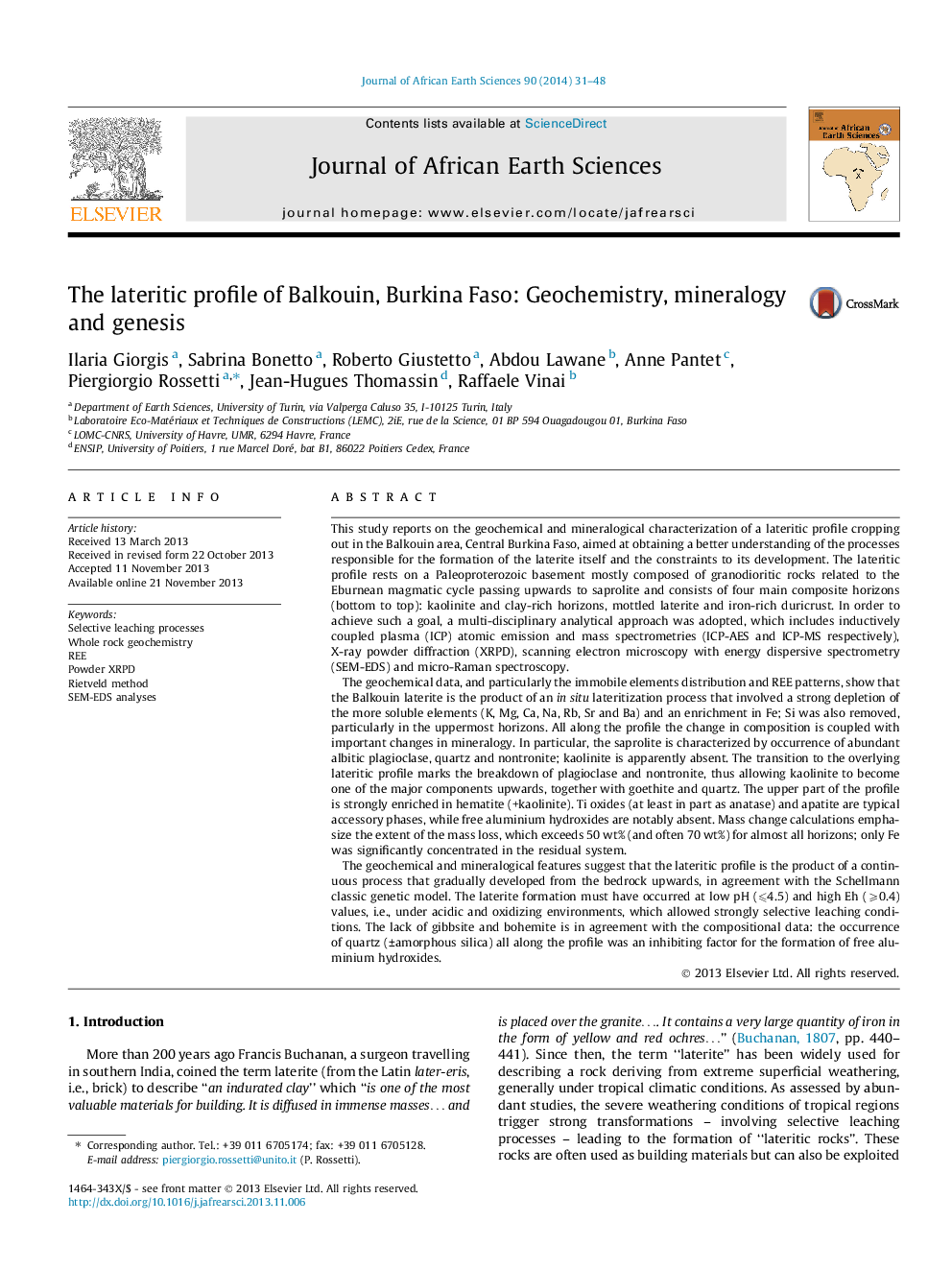| کد مقاله | کد نشریه | سال انتشار | مقاله انگلیسی | نسخه تمام متن |
|---|---|---|---|---|
| 4728836 | 1640216 | 2014 | 18 صفحه PDF | دانلود رایگان |
• A geochemical/mineralogical study was performed on a complete lateritic profile.
• The Balkouin laterite is related to extreme weathering of the underlying bedrock.
• Strong enrichments in Fe oxide/hydroxide and lack of Al oxide phases occur.
• The Eh and pH conditions are the key factor for the formation of a Fe-rich laterite.
This study reports on the geochemical and mineralogical characterization of a lateritic profile cropping out in the Balkouin area, Central Burkina Faso, aimed at obtaining a better understanding of the processes responsible for the formation of the laterite itself and the constraints to its development. The lateritic profile rests on a Paleoproterozoic basement mostly composed of granodioritic rocks related to the Eburnean magmatic cycle passing upwards to saprolite and consists of four main composite horizons (bottom to top): kaolinite and clay-rich horizons, mottled laterite and iron-rich duricrust. In order to achieve such a goal, a multi-disciplinary analytical approach was adopted, which includes inductively coupled plasma (ICP) atomic emission and mass spectrometries (ICP-AES and ICP-MS respectively), X-ray powder diffraction (XRPD), scanning electron microscopy with energy dispersive spectrometry (SEM-EDS) and micro-Raman spectroscopy.The geochemical data, and particularly the immobile elements distribution and REE patterns, show that the Balkouin laterite is the product of an in situ lateritization process that involved a strong depletion of the more soluble elements (K, Mg, Ca, Na, Rb, Sr and Ba) and an enrichment in Fe; Si was also removed, particularly in the uppermost horizons. All along the profile the change in composition is coupled with important changes in mineralogy. In particular, the saprolite is characterized by occurrence of abundant albitic plagioclase, quartz and nontronite; kaolinite is apparently absent. The transition to the overlying lateritic profile marks the breakdown of plagioclase and nontronite, thus allowing kaolinite to become one of the major components upwards, together with goethite and quartz. The upper part of the profile is strongly enriched in hematite (+kaolinite). Ti oxides (at least in part as anatase) and apatite are typical accessory phases, while free aluminium hydroxides are notably absent. Mass change calculations emphasize the extent of the mass loss, which exceeds 50 wt% (and often 70 wt%) for almost all horizons; only Fe was significantly concentrated in the residual system.The geochemical and mineralogical features suggest that the lateritic profile is the product of a continuous process that gradually developed from the bedrock upwards, in agreement with the Schellmann classic genetic model. The laterite formation must have occurred at low pH (⩽4.5) and high Eh (⩾0.4) values, i.e., under acidic and oxidizing environments, which allowed strongly selective leaching conditions. The lack of gibbsite and bohemite is in agreement with the compositional data: the occurrence of quartz (±amorphous silica) all along the profile was an inhibiting factor for the formation of free aluminium hydroxides.
Journal: Journal of African Earth Sciences - Volume 90, February 2014, Pages 31–48
